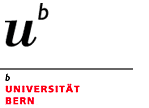The pollination syndromes exhibited by these Petunia species are characterised by differences in floral traits. Our overall concern is to determine the extent to which these floral traits may have served as premating isolating traits in Petunia, and their role in reproductive isolation and speciation. To do this, we aim to identify and characterise the genes underlying the floral traits, and to look for selection patterns to determine if these are involved in divergence and possibly speciation.
Research in our group covers these traits:
Scent Reproductive organ morphology Reproductive organ morphology  Nectar Nectar  Colour Colour
P. integrifolia ssp. inflata, P. axillaris and P. exserta are closely related and can easily be crossed in the laboratory. We use a variety of different lab-based techniques to characterise the genetic and molecular bases of these traits including classical and molecular genetics, next-generation sequencing and bioinformatics. We test near-isogenic lines with pollinator choice assays under controlled laboratory conditions as well as in the natural habitat. Petunia is a highly accessible experimental model system, with a long history of biochemical and genetic research. Transposon-induced mutants are available and transgenics are routine.
| 
